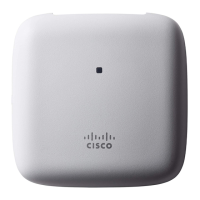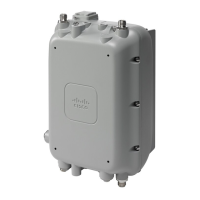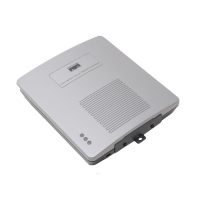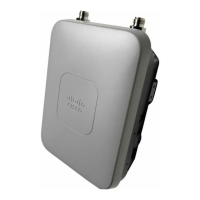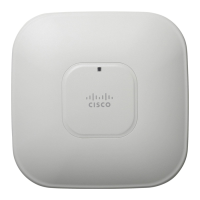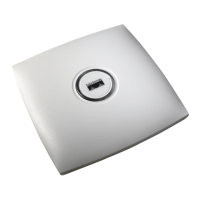4
–
802.11ac based Transmit Beamforming
–
Quality of Service (QoS)
–
Radio Resource Management (RRM)
–
Rogue Detection
–
BandSelect
–
Integrated Bluetooth LE 4.1 radio for location and asset tracking.
• The AP supports the following hardware external interfaces:
–
Three local GigE Ethernet Ports, one uplink GigE port, and one passive pass-through RJ45
port.
–
RS-232 management console interface through a custom 4-pin connector AIR-CONSADPT=.
Note The AP may face issues while booting if you use an unterminated console cable (not
plugged into any device or terminal) or a console cable that is more than one meter in
length.
–
Three 10/100/1000BASE-T ports (local Ethernet ports), one of which also serves as a PoE-Out
port.
The PoE-Out port 802.3af Class 0 (15.4W) power when the AP is powered by802.3at power.
The PoE-Out port does not provide any power output when the AP is powered by 802.3af
power.
–
One RJ-45 passive pass-through port (back to bottom).
–
Mode button. For information on how to use the Mode button, see “Using the Mode Button”
section on page 36.
–
One multi-color LED status indicator for the AP status. LEDs are also present to indicate
per-port status for local the Ethernet ports. For information, see the “Checking the Access
Point LEDs” section on page 33.
–
Three local Gigabit Ethernet ports available to securely connect wired devices to the network.
• Two integrated 2.4 GHz/5 GHz dual-band antennas located on the sides of the 1815w access point
under the top housing. Peak antenna gain is approximately 2 dBi and 3 dBi in the 2.4 GHz and
5 GHz bands respectively.

